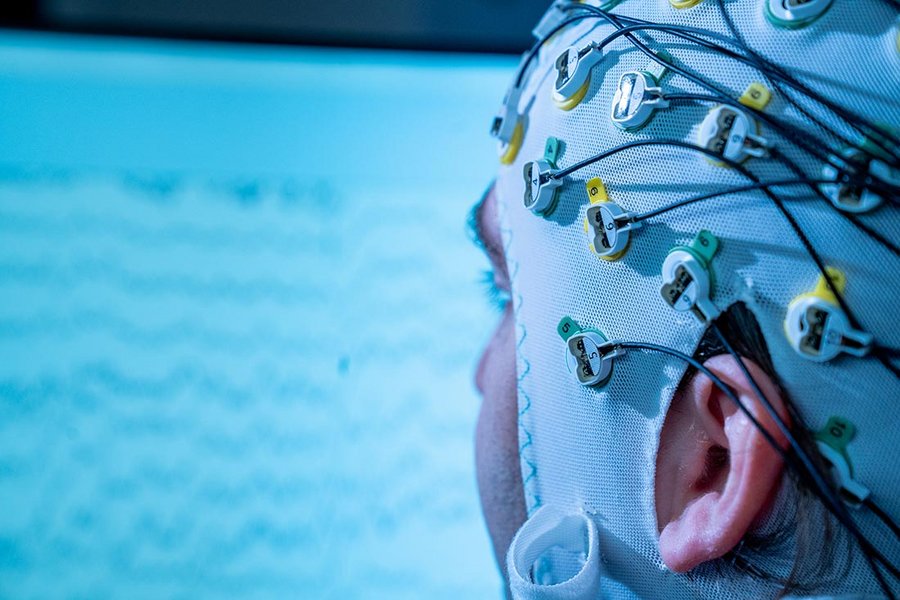Can computers read minds?
In the Science Gallery experiment, Diana Gherman, a research associate in the Department of Neuroadaptive Human-Technology Interaction, illustrates how a person's brain activity can be measured and what conclusions can be drawn from it. Using an electroencephalography (EEG for short) headgear, she records the brain activity of test subject Tatiana Kholiavko in real time. A brain-computer interface interprets the brain data in relation to workload.
Date: Wednesday, December 14, 2022 | 12 p.m. - 1 p.m.
Location: Science Gallery of BTU Cottbus-Senftenberg (in the foyer of the IKMZ), Central Campus, Platz der Deutschen Einheit 2, 03044 Cottbus
The Innovation Hub 13 cordially invites all interested parties. The event is free of charge. Registrations are possible now and until Tuesday, December 13, by mail to sciencegallery(at)innohub13.de. The number of participants is limited to 20 people. The lecture will be held in English with German translation.
"The goal is to keep the workload at a reasonable level in the professional world in the future," says Diana Gherman, PhD. "It is best if the workload is neither too high nor too low, so that people are not overworked or underworked and bored. Neuroadaptive technologies could adapt work tasks in the future, for example, by making them lighter or heavier. This way, people feel better and mistakes can be avoided."
Diana Gherman's dissertation focuses on the applicability of passive brain-computer interfaces. She is investigating how neuroadaptive technologies can be used to guide decisions and improve human-computer interactions.
About the Lichtenberg Professorship in Neuroadaptive Human-Computer Interaction
The head of the department, Prof. Dr. Thorsten O. Zander, is considered a pioneer in the field of passive brain-computer interfaces, which he defined in 2008. He is co-founder and co-director of the Society for Neuroadaptive Technology, which organizes conferences and other events to promote research and outreach activities on all aspects of neuroadaptive technology.
Technical Contact
André Röhrig
VP Knowledge and Technology Transfer and Structure
T +49 (0) 355 69-4698
roehrig(at)b-tu.de

